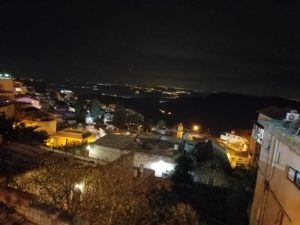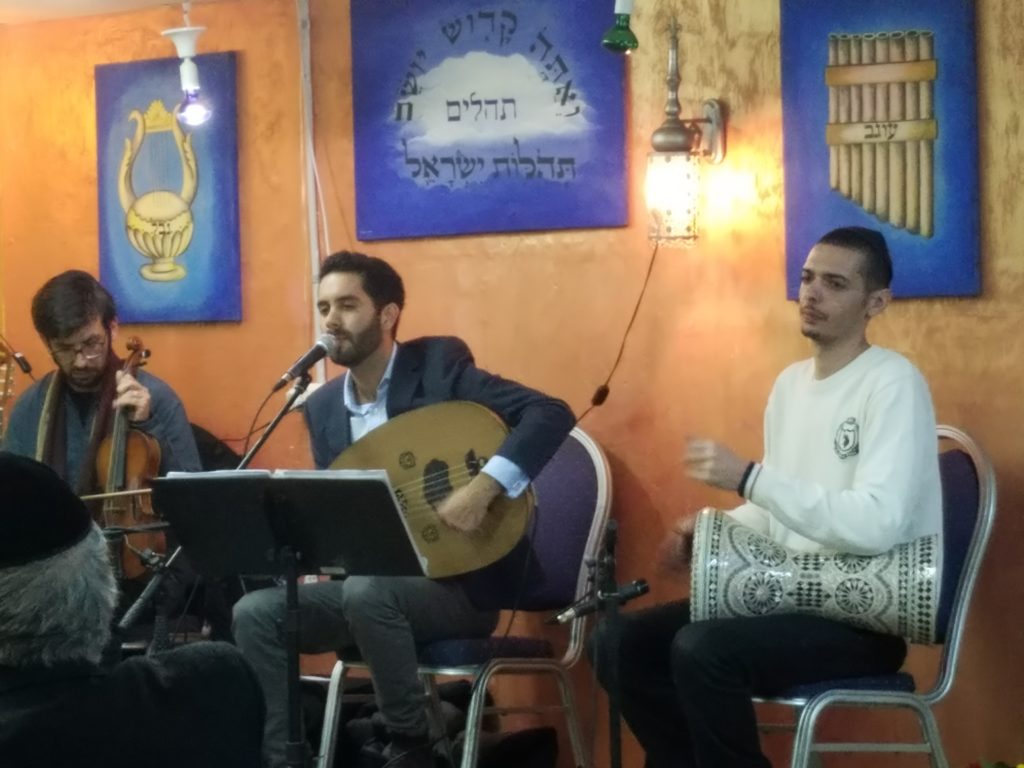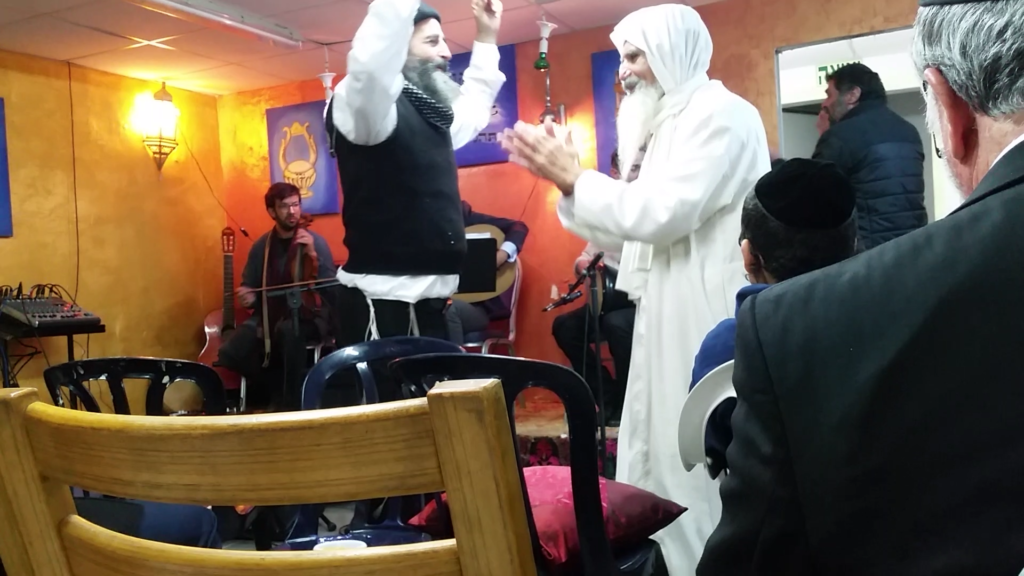
When you step out of your home in Tzfat, you never know what adventure this will bring. Last night we went for our usual Motzei Shabbos walk. It was late evening, the town looked quite empty, as there are fewer visitors during the current rain season. On our walk, starting at the Saraya – an 18th century Ottoman fortress, then following the loop of Jerusalem street which circles the mountain upon which the old city of Tzfat is built, we bumped into three different friends and exchanged wishes for a good week, and were heading home.
When we got to our street, a Sephardi-looking character beckoned us to enter Old City Bomb Shelter #3, which is one minute from our house. We of course immediately entered, and found ourselves in a small room, with women and men sections, separated by wooden lattice divider. The walls were painted pleasant terracotta color, and had beautiful paintings of ancient Israeli musical instruments, with the names of instruments in Hebrew on the pictures. There was a “big crowd” in the room, which in Jerusalem would be 200, but in Tzfat a “big crowd” is about 30 people, mostly Moroccan Jews. The atmosphere transported us to 15th century Morocco.

We were warmly greeted by many people, and offered cakes, pastries, drinks and wine. On a small stage there were three musicians – an oud/vocalist, a violinist, playing a violin held vertically on his knees, and a musician playing doumbeck (middle East drum). There was so much music from those three instruments that it sounded like 20-person band. Everybody was clapping, singing, dancing. The music was mesmerizing. The people were friendly, warm and generous, and treated us like family. Later a group of Hasidim came in, and also recently elected Tzfat mayor Shuki Ohana, and sat down to listen. Turned out it was a “Hilula” – Yortzait of Baba Sali (famous Moroccan Sephardic Rabbi and Kabbalist).
In the middle of a circle of dancers there was an elderly man with long white beard, dressed in white robe and his head covered with white scarf, and looking himself like Baba Sali, and other people treated him with an apparent respect.

After a while the music stopped. The man dressed like Baba Sali took a microphone and started to talk to the crowd in Hebrew, in unexpectedly young-sounding voice, about his personal encounters with Baba Sali, and also about what music meant for Moroccan Jews, how it was full of longing for the Land of Israel and how it helped to keep connection to the Land before the Jews were able to come here. When he finished speaking, the mayor of Tzfat spoke, saying how much he appreciated Moroccan Jews and offering help and assistance in continuing Moroccan music traditions. He also mentioned his plans to make a festival of Moroccan and Ladino music, similar to existing Klezmer festival in Tzfat every summer. After that musicians went back to playing and singing. Reluctantly we left as I had to prepare homework for my Hebrew class next morning, and the sounds of music accompanied us on the way home. That was an unexpected, but perfect Motzei Shabbos, in a company of our newly found singing and dancing Moroccan brothers and sisters.
